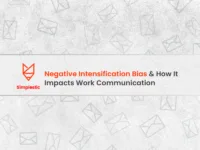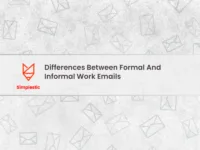Professionalism is the new currency of the corporate world. Success in the modern workplace takes more than just ticking the right boxes, you have to earn your colleagues’ trust and respect across different levels of your company. This is done through a simple gesture on your part – by signing off your emails professionally. So we have a list of 23 Professional Ways to End Email to help you make your sign-off a bit different
In the digital age, email remains one of the most prevalent forms of communication in the professional world. Whether you are corresponding with colleagues, clients, or superiors, how you conclude your email can leave a lasting impression. A well-crafted closing not only reinforces your message but also reflects your professionalism and helps cultivate positive relationships. This guide will explore various professional ways to end email messages, provide examples, and offer tips for choosing the right closing for your context.
Why Email Closings Matter
The closing of your email serves several important functions:
- Professionalism: A proper closing conveys respect and professionalism, which is essential in business communication.
- Clarity: It signals the end of your message and reinforces the main point or call to action.
- Tone: The closing sets the tone for your relationship with the recipient, whether formal, friendly, or somewhere in between.
- Call to Action: A thoughtful closing can encourage the recipient to respond or take the desired action.
Key Elements
When crafting your email closing, consider the following elements:
1. Tone
The tone of your email should align with your relationship with the recipient and the context of your message. A formal email to a client will require a different closing than a casual email to a colleague.
2. Context
Consider the purpose of your email. Are you making a request, providing information, or simply checking in? Tailor your closing to fit the context.
3. Relationship
Your relationship with the recipient plays a crucial role in determining how formal or casual your closing should be. A closing for a superior may differ significantly from one for a peer or a friend.
4. Call to Action
If you expect a response or action from the recipient, make sure your closing reflects that expectation clearly.
Examples and Usage
Here are some common professional email closings, categorized by tone and context, along with explanations of when to use them:
Formal Closings
- Sincerely
- Usage: This is a classic closing for formal emails, suitable for business correspondence, cover letters, and communications with superiors.
- Example:
Sincerely,
[Your Name]
[Your Position]
[Your Company]
- Best Regards
- Usage: A polite and professional closing that is versatile for both formal and semi-formal emails.
- Example:
Best regards,
[Your Name]
- Kind Regards
- Usage: Similar to “Best Regards,” but with a slightly warmer tone. Suitable for clients and colleagues you know well.
- Example:
Kind regards,
[Your Name]
- Yours Faithfully
- Usage: Typically used in formal correspondence when you do not know the recipient’s name (e.g., “Dear Sir/Madam”).
- Example:
Yours faithfully,
[Your Name]
- Respectfully
- Usage: Appropriate for formal emails, especially when addressing a superior or discussing sensitive topics.
- Example:
Respectfully,
[Your Name]
Semi-Formal Closings
- Warm Regards
- Usage: A friendly yet professional closing that works well for colleagues and clients with whom you have a good rapport.
- Example:
Warm regards,
[Your Name]
- Thank You
- Usage: A straightforward closing that expresses gratitude, suitable for emails where you are requesting something or acknowledging assistance.
- Example:
Thank you,
[Your Name]
- Looking Forward to Hearing from You
- Usage: A closing that encourages a response, ideal for inquiries or requests.
- Example:
Looking forward to hearing from you,
[Your Name]
Casual Closings
- Cheers
- Usage: A casual and friendly closing, best used with colleagues or contacts you know well.
- Example:
Cheers,
[Your Name]
- Take Care
- Usage: A warm and informal closing, suitable for friendly emails.
- Example:
Take care,
[Your Name]
- Best
- Usage: A simple and friendly closing, appropriate for casual yet professional emails.
- Example:
Best,
[Your Name]
Tips for Choosing the Right Closing
1. Match the Tone of Your Message
Ensure that your closing reflects the overall tone of your email. If your email is formal, maintain that formality in your closing. Conversely, if your message is friendly and casual, choose a closing that matches that tone.
2. Consider the Recipient’s Preferences
If you have a good understanding of the recipient’s communication style, tailor your closing to align with their preferences. Some people prefer more formal closings, while others may appreciate a casual sign-off.
3. Be Mindful of Cultural Differences
Different cultures have varying norms regarding email communication. In some cultures, formal closings are expected, while in others, casual closings may be more acceptable. Be aware of these differences, especially when communicating with international colleagues.
4. Avoid Overused Phrases
While common closings like “Best” and “Sincerely” are safe choices, consider varying your closings to keep your emails fresh and engaging. This is particularly important if you frequently communicate with the same recipients.
5. Include a Call to Action If Necessary
If you expect a response or action from the recipient, make sure your closing reflects that expectation. Phrases like “Looking forward to your response” or “Let me know if you have any questions” can encourage engagement.
43 Professional Ways to End Email
- Thank you for your time.
- I look forward to hearing from you.
- I appreciate your assistance in completing this project.
- Your help is much appreciated.
- Thanks again for taking the time to review our proposal.
- Thank you for your consideration. Best regards,
- Please do not hesitate to reach out to me with any questions. Thank you.
- Our team is looking forward to your reply. Thank you in advance,
- We appreciate your feedback on the [project] at hand. Thanks in advance.
- Warm regards,
- Thank you for prioritizing this project.
- Your help is much appreciated.
- We are excited to hear your ideas about the proposed annual event. Thank you.
- Thank you for your time and expertise.
- I appreciate your help on this.
- Thank you for taking the time to help me with this project! I look forward to hearing from you.
- Thank you for all your time and efforts in completing this project. I look forward to hearing back from you.
- I greatly appreciate your time and assistance in completing this project. I look forward to hearing from you.
- Thank you for taking the time to review this request.
- Thank you for your time and consideration in this matter.
- I appreciate your assistance in completing this project.
- Thanks for taking the time to discuss this project with me. I look forward to hearing back from you soon so we can move forward on finalizing the details!
- Thank you for your interest.
- Your support has been invaluable; thank you for your guidance.
- I’m grateful for your insights and look forward to your feedback.
- Thank you for your collaboration on this initiative; it’s greatly appreciated.
- I appreciate your prompt response and look forward to your thoughts.
- Your expertise has greatly contributed to this project; thank you!
- Thank you for your continued support and dedication to this project.
- I appreciate your willingness to assist; your input is highly valued.
- Thank you for your attention to this matter; I look forward to your response.
- Your feedback is crucial to our success; thank you for sharing your thoughts.
- I appreciate your time and look forward to discussing this further.
- Thank you for your prompt attention to this request; it means a lot.
- I’m looking forward to your insights and appreciate your help.
- Thank you for your thoughtful consideration; it’s much appreciated.
- Your assistance has made a significant difference; thank you!
- Thank you for your engagement and support throughout this process.
- I appreciate your help and look forward to collaborating further.
- Thank you for your patience and understanding; I value your input.
- Your contributions are greatly appreciated; thank you for your support.
- Thank you for your time; I’m eager to hear your thoughts.
- I’m grateful for your partnership and look forward to our continued collaboration.
Each of these sign-offs conveys a different tone, so choose the one that is best suited for the email you are sending. If you are writing a formal email, “Regards” is always a good choice. “Best” is a bit more friendly and can be used for both formal and informal emails. “Thank you” conveys appreciation and is also suitable for both formal and informal emails. “Take care” is a friendly sign-off that works well for informal emails. Whichever sign-off you choose, make sure it is appropriate for the email you are sending.
Ending your email with a professional closing is an essential part of effective communication in the workplace. By carefully selecting your email closing based on tone, context, and your relationship with the recipient, you can leave a positive impression and foster stronger professional relationships. Whether you choose a formal, semi-formal, or casual closing, the key is to be genuine and thoughtful in your approach.
As you navigate your email communications, remember that the closing is your final opportunity to convey your message and reinforce your professionalism. With the examples and tips provided in this guide, you’ll be well-equipped to craft impactful email closings that resonate with your recipients and enhance your professional image.
Related| Examples of A Professional email asking for something




